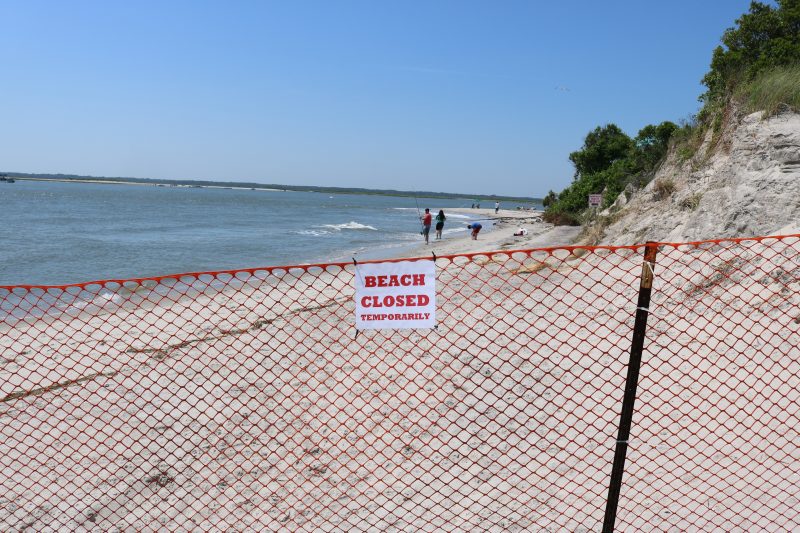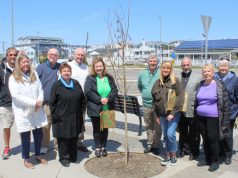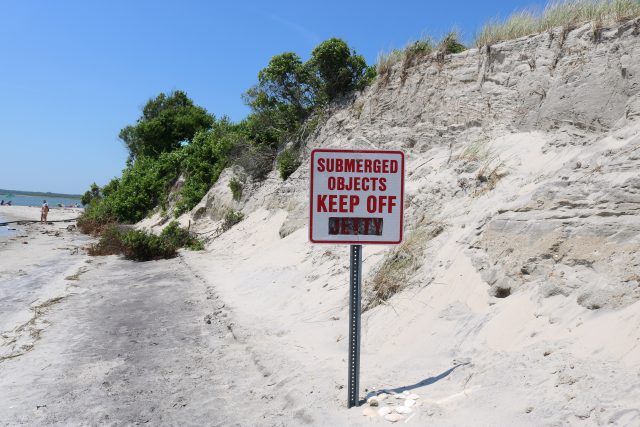
By DONALD WITTKOWSKI
Sea Isle City will confer with state and federal agencies to try to determine the cause of severe beach erosion that sheared away some of the sand dunes near the Townsends Inlet Bridge.
In the meantime, the city has closed the damaged beach to the public. Mounds of sand, large rocks and even some trees tumbled down on the beach when the dunes collapsed.
“The question is, why. It’s just in that area. The rest of the beaches in town are built up,” Mayor Leonard Desiderio said in an interview Wednesday.
Desiderio and City Business Administrator George Savastano noted that erosion has occurred in the past in the same section of beach on the bay side of the Townsends Inlet Bridge, but not this serious.
“It’s more erosion than we’re used to,” Savastano said. “We’re trying to figure it out.”
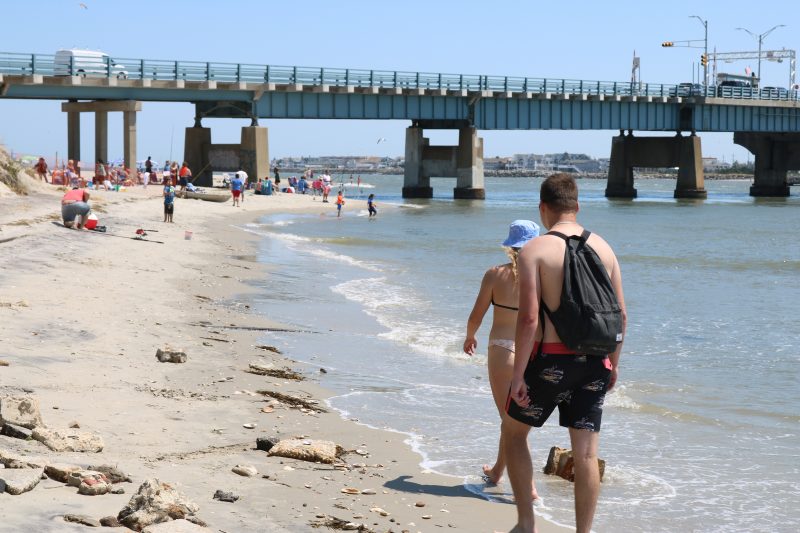
At this point, the city is considering its options for repairing the beach, but will first talk to the New Jersey Department of Environmental Protection and the U.S. Army Corps of Engineers for their suggestions on long-term solutions for the erosion.
“The fact is that our options are very limited,” Desiderio told members of City Council during their meeting Tuesday.
Savastano mentioned the possibility of “sand harvesting” to patch up the eroded beach. Under that scenario, sand would be taken from other beaches in the fall to repair the damaged dunes near the Townsends Inlet Bridge, he said.
The collapsed dunes are in the same area where a pathway once allowed people to walk down to the beach from a pavilion and boardwalk in Townsends Inlet Waterfront Park near the bridge.
Now, much of the dune wall has either been washed away or simply collapsed, leaving a steep drop-off from the pathway to the beach that appears more than 20 feet high in some places.
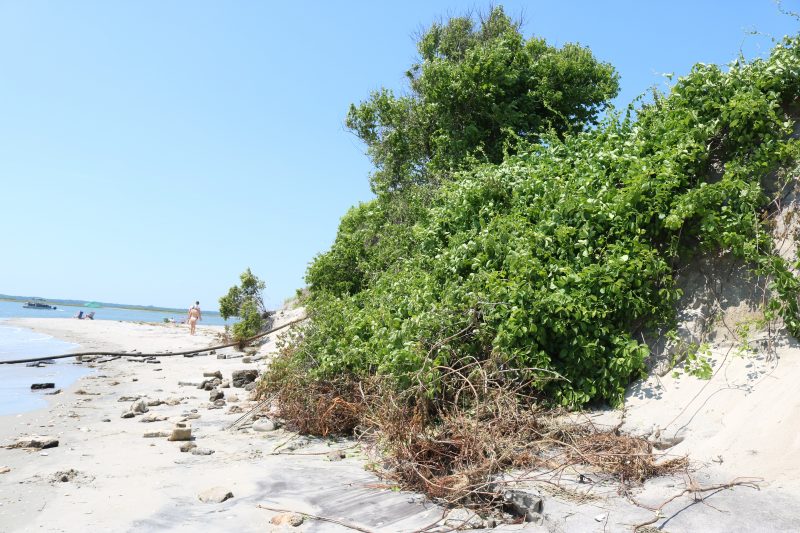
Some trees are standing precariously on the edge of the collapsed dunes, while others have fallen onto the beach below along with large branches.
The beach itself is littered with large rocks and other debris. However, people continue to walk and fish in the area even though the city has erected a fence and signs to block public access to the beach.
“The beach is still technically closed,” Savastano said while acknowledging that people are still going there.
Another section of the beach closer to the bridge remains open to the public. In late April, work crews from Sea Isle’s Public Works Department cleared away excess sand from another pathway that leads from the parking lot at Townsends Inlet Waterfront Park to the beach.
The same beach in the southern tip of Sea Isle was one of two areas that were radically altered in April by the powerful waters of Townsends Inlet, the channel that separates Sea Isle and Avalon.
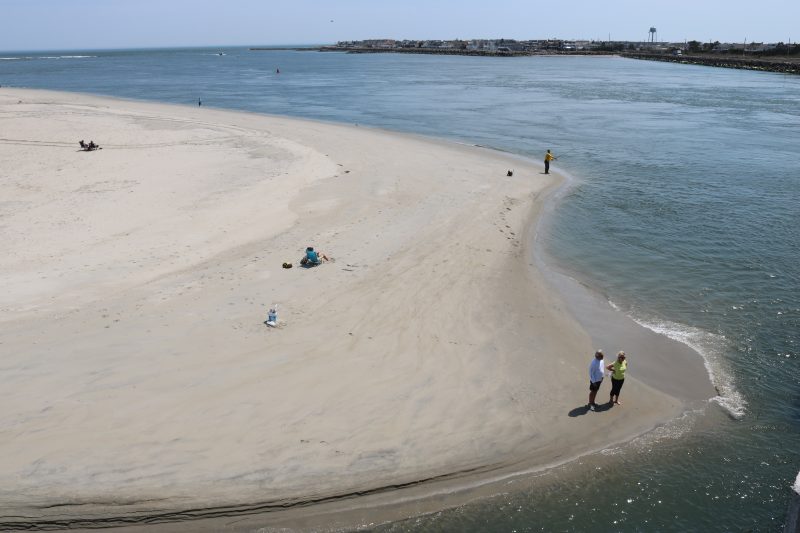
Part of the beach on the Sea Isle side of the Townsends Inlet Bridge was stripped of the top layer of powdery sand, leaving thousands of clam shells in its place. Since then, some of the sand has returned to cover up the clam shells.
The remnants of the beach, in turn, have formed a massive sandbar that extends far into Townsends Inlet on the ocean side of the bridge. The sandbar has created a makeshift beach for sunbathers and anglers to enjoy.
Savastano raised the possibility that the beach erosion could be connected to the recent appearance of the sandbar.
“Maybe that’s contributing to it, but we don’t know for sure,” he said.
It is also unclear whether a beach replenishment project may have had any role in the creation of the new sandbar. The U.S. Army Corps of Engineers, a federal agency, supervised the beach project in partnership with Sea Isle.
Last summer, Sea Isle’s beaches were widened and replenished with more than 750,000 cubic yards of new sand between 28th and 52nd streets in the midsection of town and from 74th to 93rd streets in Townsends Inlet at the southern end of the island.
“The good news is that, apart from this small area at the southern tip of the island, the rest of our beaches are in great shape; and if the crowds we’ve seen so far are any indication, this is going to be a banner year,” Desiderio said.
